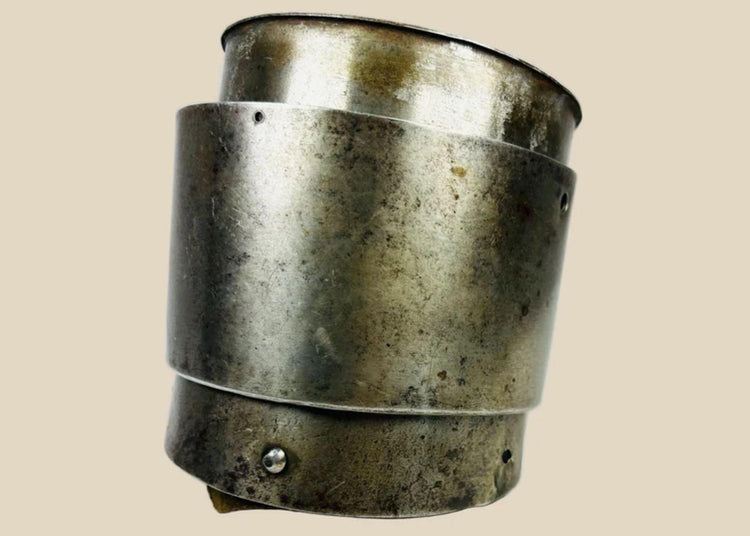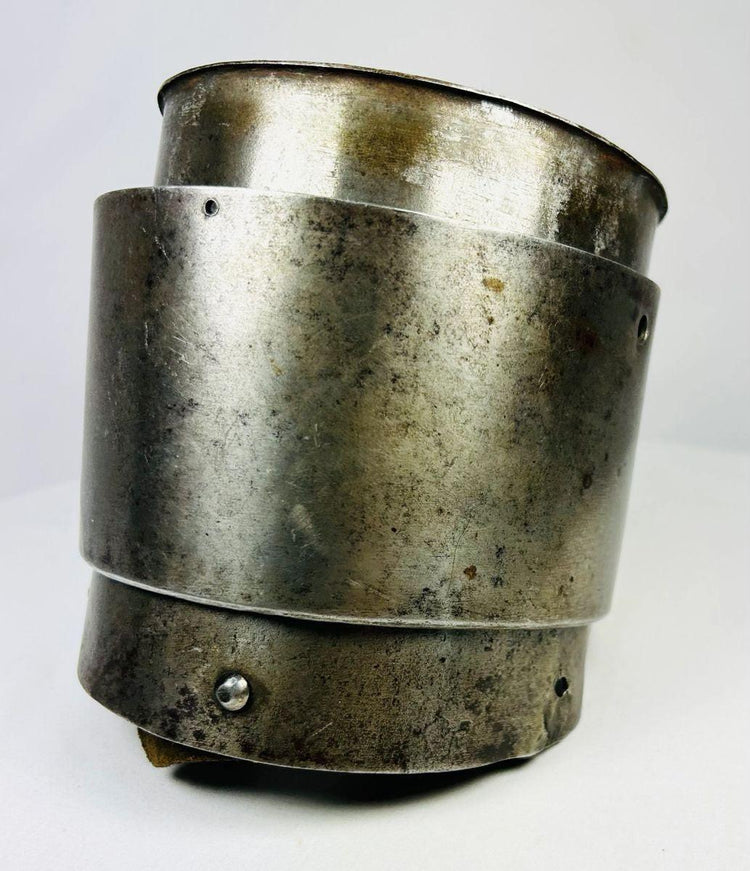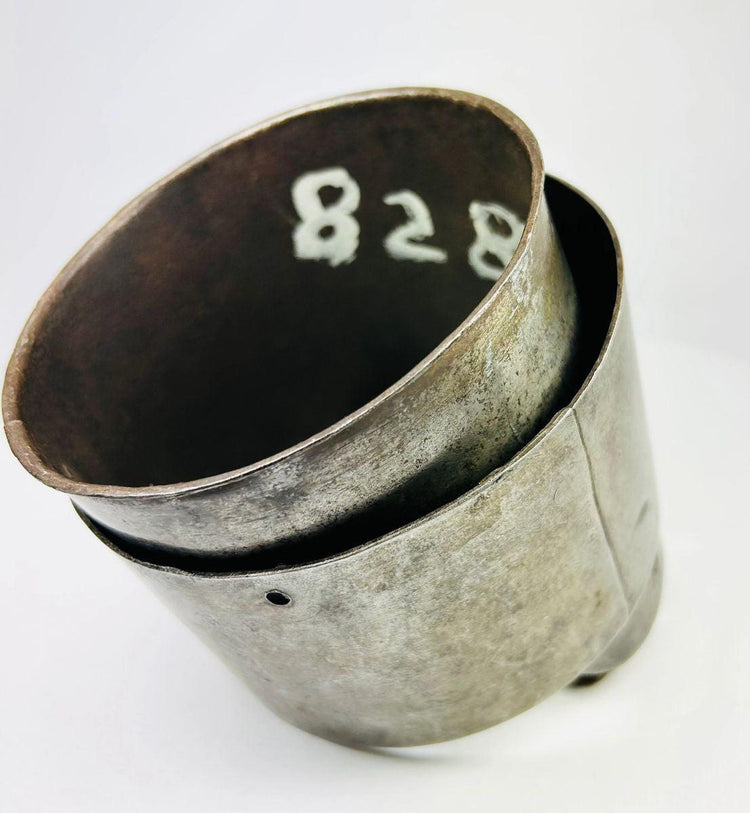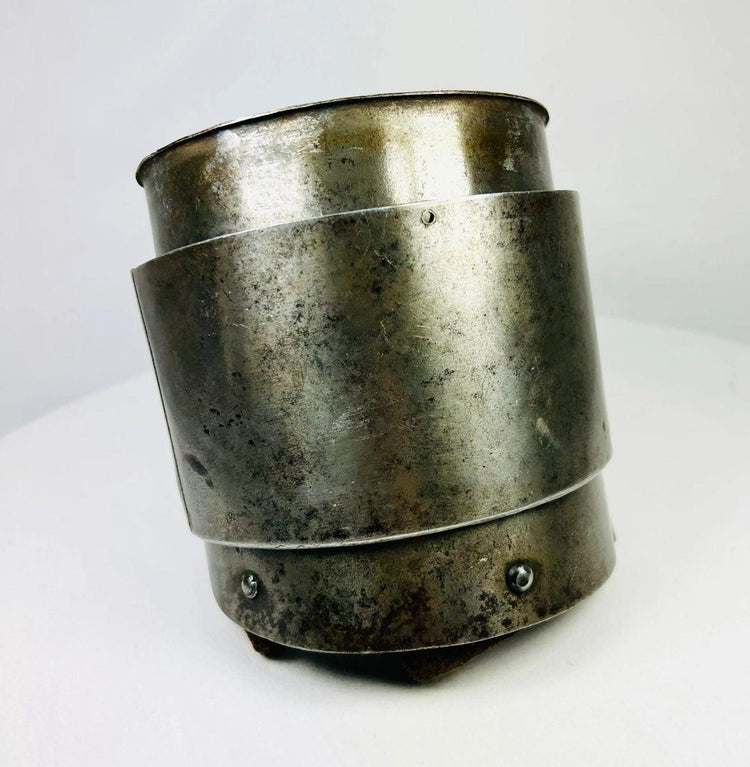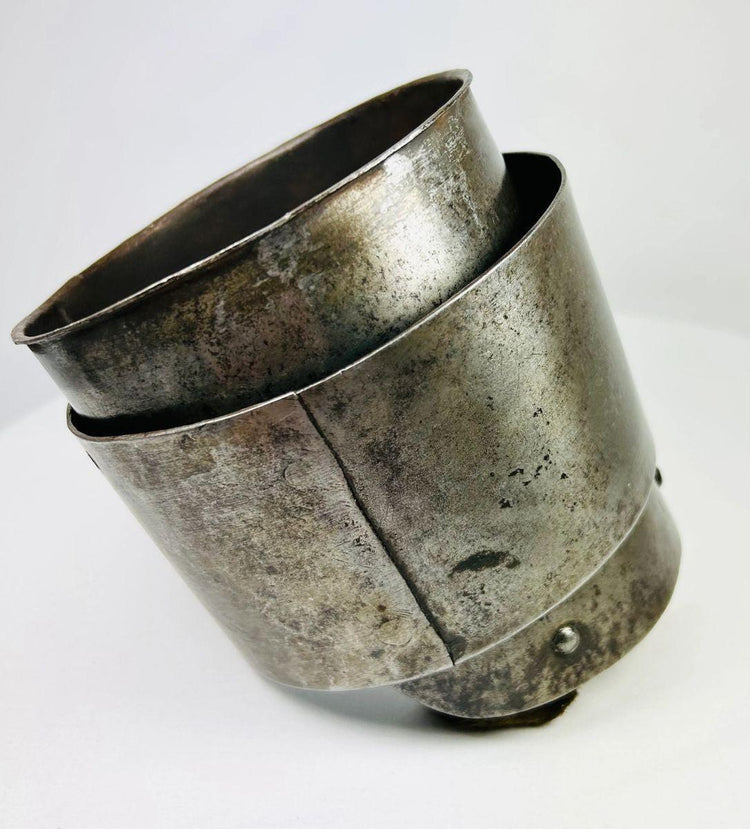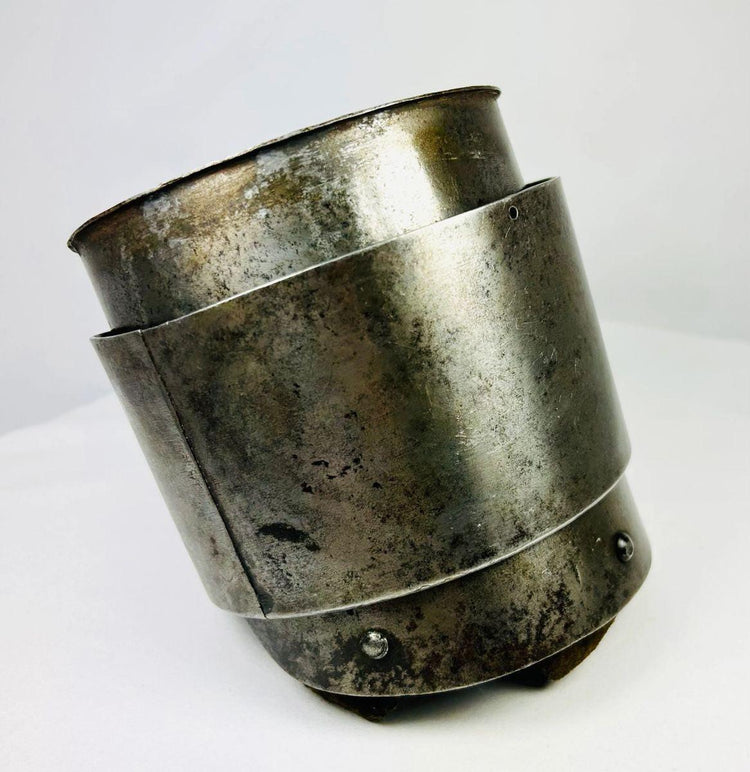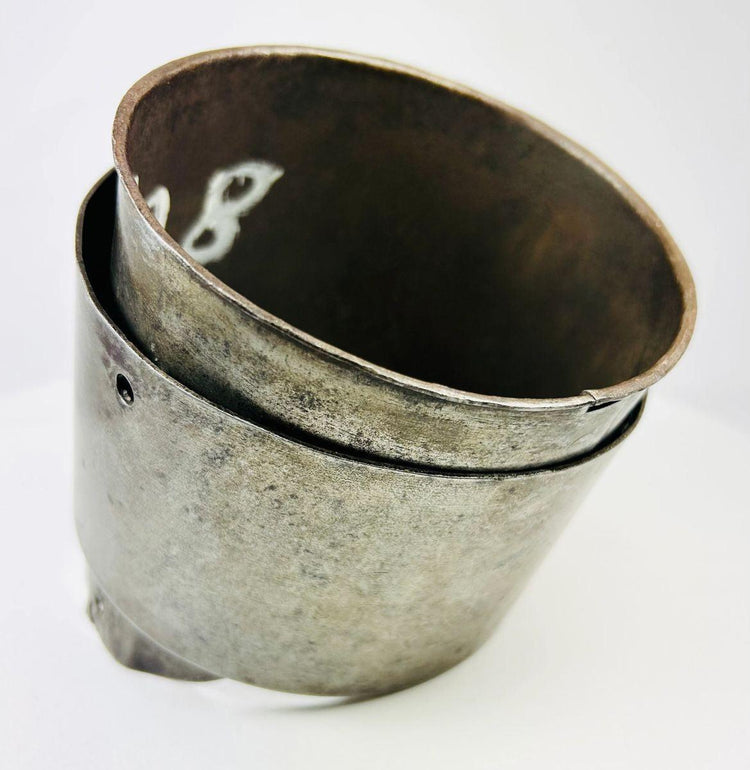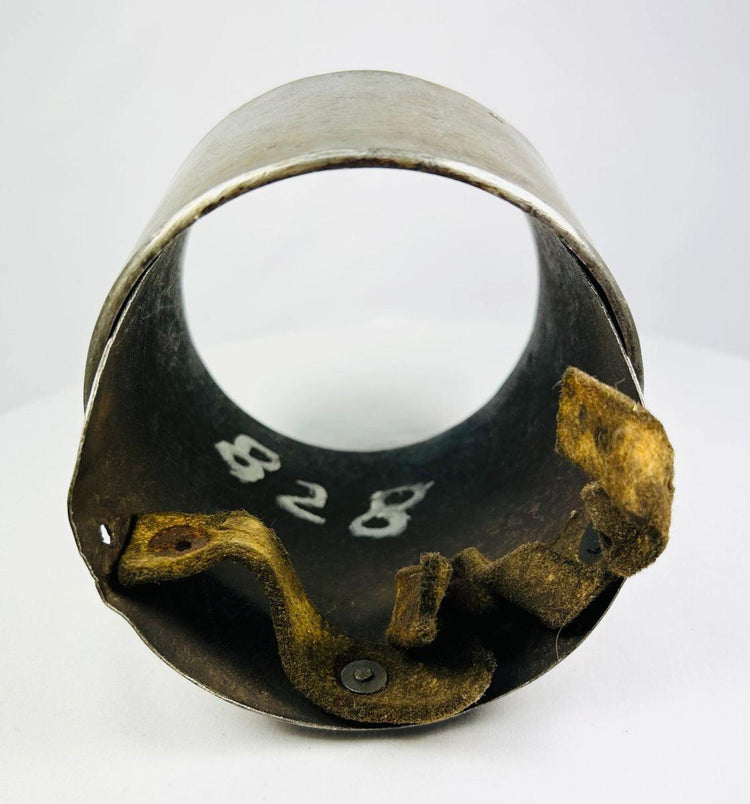Ancient | Arm Guard from European Siege Armour | 17th Century
Description
More
Less
Historical Context & Origin
Region: Europe, likely used in siege warfare during prolonged conflicts such as the Thirty Years’ War
Material: Heavy steel with riveted articulation and interior strapping remnants
Period: 17th Century
Description
This authentic 17th-century upper cannon armor element was designed as part of a full suit of siege armor, created to withstand the brutal demands of prolonged fortress assaults and close-quarters combat. Constructed from overlapping cylindrical steel plates, it provided durable protection for the upper arm while allowing limited mobility through carefully placed rivets and articulation points. Traces of original strapping remain visible, a testament to its rugged functionality in the field. Heavier and more protective than standard field armor, this piece reflects the tactical necessities of siege warfare, where maximum defense against projectiles and melee strikes was paramount.
Features
- Overlapping cylindrical plates for both coverage and articulation
- Reinforced beveled edges and bands for deflection of blows and projectiles
- Riveted articulation for mobility without compromising defense
- Traces of original interior strapping for secure fastening
- Robust steel construction typical of 17th-century siege armor
Cultural & Military Significance
Siege armor was purpose-built to endure the most dangerous conditions of early modern warfare. Heavier than cavalry or field armor, its reinforced design prioritized protection over comfort, safeguarding soldiers storming fortifications or defending strongholds. This upper cannon element embodies the transition from traditional plate armor to specialized protective gear adapted for an age increasingly dominated by firearms and prolonged siege tactics. It represents both the technological ingenuity and the martial traditions of the Renaissance military era.
Condition
The armor exhibits a naturally aged patina with areas of surface pitting and minor corrosion consistent with centuries of age. Despite this, the piece remains structurally stable, with well-preserved beveled edges and reinforcing bands. The surface wear enhances its authenticity, offering a tangible link to its original battlefield use. No modern repairs or restorations are present.
Dimensions (approximate)
Length: 7 in
Age
Approximately 400 years old
Description
Historical Context & Origin
Region: Europe, likely used in siege warfare during prolonged conflicts such as the Thirty Years’ War
Material: Heavy steel with riveted articulation and interior strapping remnants
Period: 17th Century
Description
This authentic 17th-century upper cannon armor element was designed as part of a full suit of siege armor, created to withstand the brutal demands of prolonged fortress assaults and close-quarters combat. Constructed from overlapping cylindrical steel plates, it provided durable protection for the upper arm while allowing limited mobility through carefully placed rivets and articulation points. Traces of original strapping remain visible, a testament to its rugged functionality in the field. Heavier and more protective than standard field armor, this piece reflects the tactical necessities of siege warfare, where maximum defense against projectiles and melee strikes was paramount.
Features
- Overlapping cylindrical plates for both coverage and articulation
- Reinforced beveled edges and bands for deflection of blows and projectiles
- Riveted articulation for mobility without compromising defense
- Traces of original interior strapping for secure fastening
- Robust steel construction typical of 17th-century siege armor
Cultural & Military Significance
Siege armor was purpose-built to endure the most dangerous conditions of early modern warfare. Heavier than cavalry or field armor, its reinforced design prioritized protection over comfort, safeguarding soldiers storming fortifications or defending strongholds. This upper cannon element embodies the transition from traditional plate armor to specialized protective gear adapted for an age increasingly dominated by firearms and prolonged siege tactics. It represents both the technological ingenuity and the martial traditions of the Renaissance military era.
Condition
The armor exhibits a naturally aged patina with areas of surface pitting and minor corrosion consistent with centuries of age. Despite this, the piece remains structurally stable, with well-preserved beveled edges and reinforcing bands. The surface wear enhances its authenticity, offering a tangible link to its original battlefield use. No modern repairs or restorations are present.
Dimensions (approximate)
Length: 7 in
Age
Approximately 400 years old
You May Also Like


























